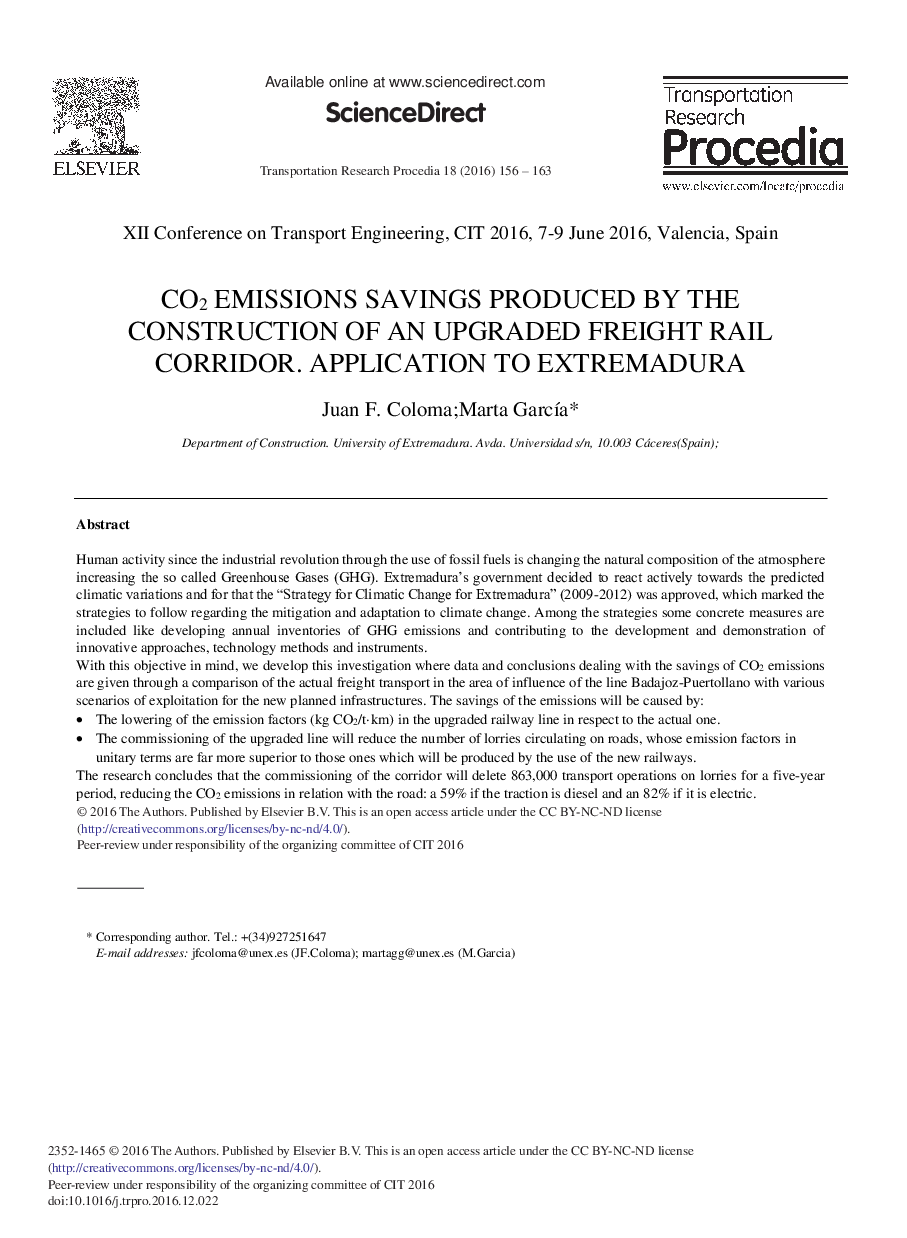| کد مقاله | کد نشریه | سال انتشار | مقاله انگلیسی | نسخه تمام متن |
|---|---|---|---|---|
| 5125651 | 1488277 | 2016 | 8 صفحه PDF | دانلود رایگان |

Human activity since the industrial revolution through the use of fossil fuels is changing the natural composition of the atmosphere increasing the so called Greenhouse Gases (GHG). Extremadura's government decided to react actively towards the predicted climatic variations and for that the “Strategy for Climatic Change for Extremadura” (2009-2012) was approved, which marked the strategies to follow regarding the mitigation and adaptation to climate change. Among the strategies some concrete measures are included like developing annual inventories of GHG emissions and contributing to the development and demonstration of innovative approaches, technology methods and instruments.With this objective in mind, we develop this investigation where data and conclusions dealing with the savings of CO2 emissions are given through a comparison of the actual freight transport in the area of influence of the line Badajoz-Puertollano with various scenarios of exploitation for the new planned infrastructures. The savings of the emissions will be caused by:
- The lowering of the emission factors (kg CO2/t·km) in the upgraded railway line in respect to the actual one.
- The commissioning of the upgraded line will reduce the number of lorries circulating on roads, whose emission factors in unitary terms are far more superior to those ones which will be produced by the use of the new railways.The research concludes that the commissioning of the corridor will delete 863,000 transport operations on lorries for a five-year period, reducing the CO2 emissions in relation with the road: a 59% if the traction is diesel and an 82% if it is electric.
Journal: Transportation Research Procedia - Volume 18, 2016, Pages 156-163